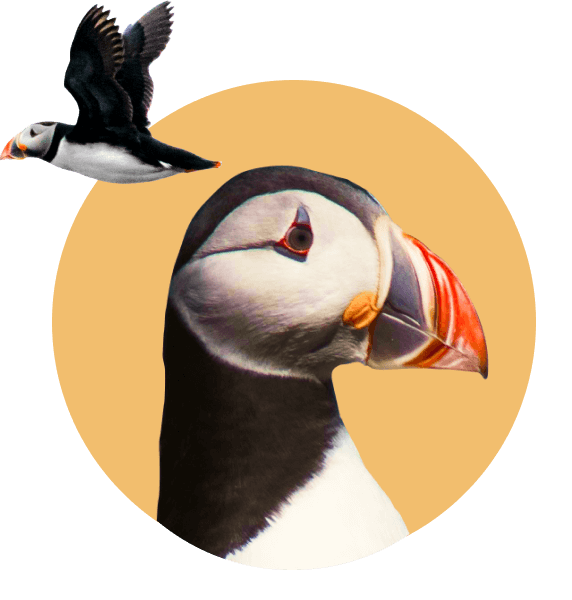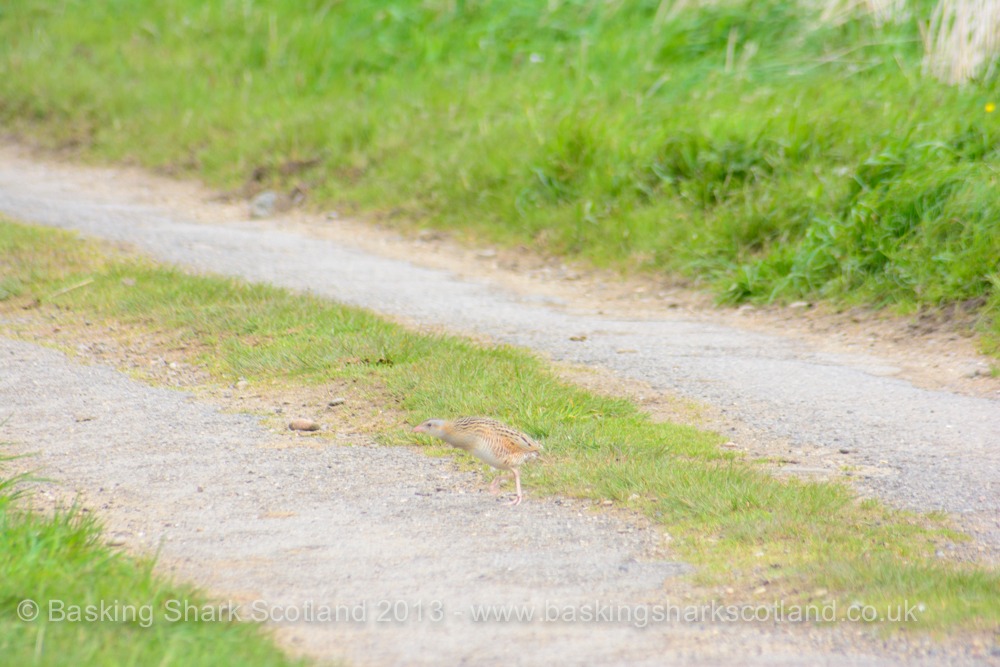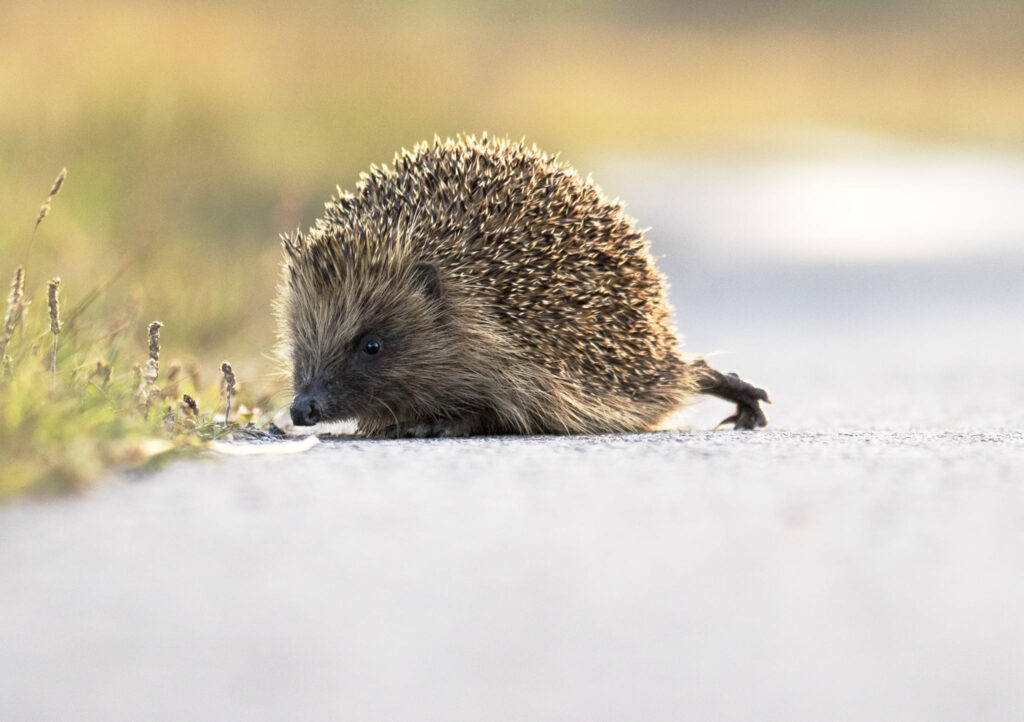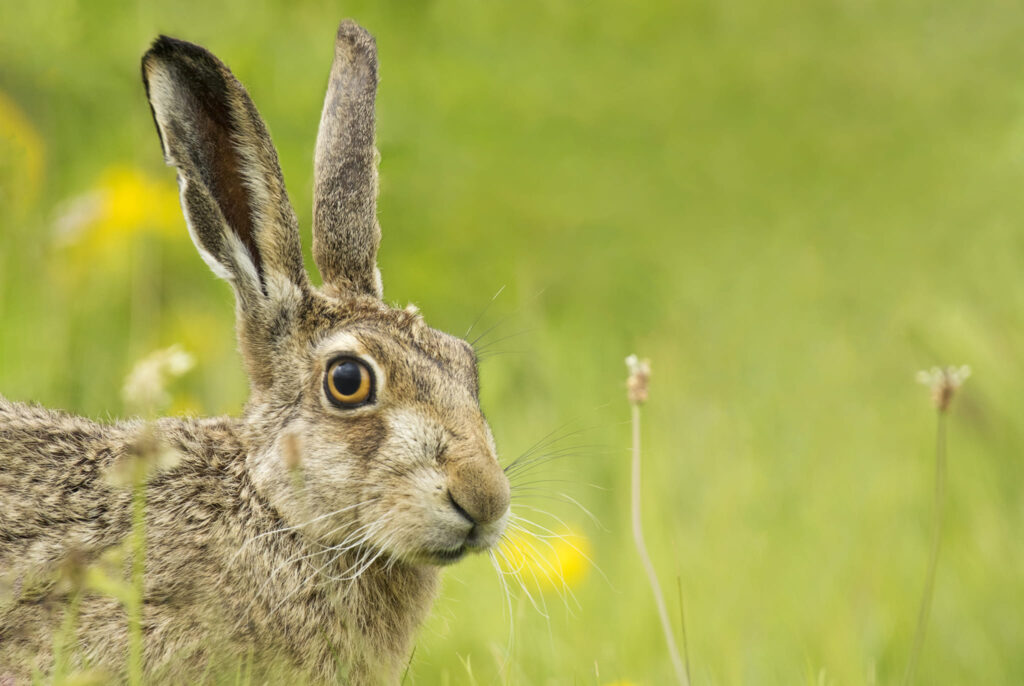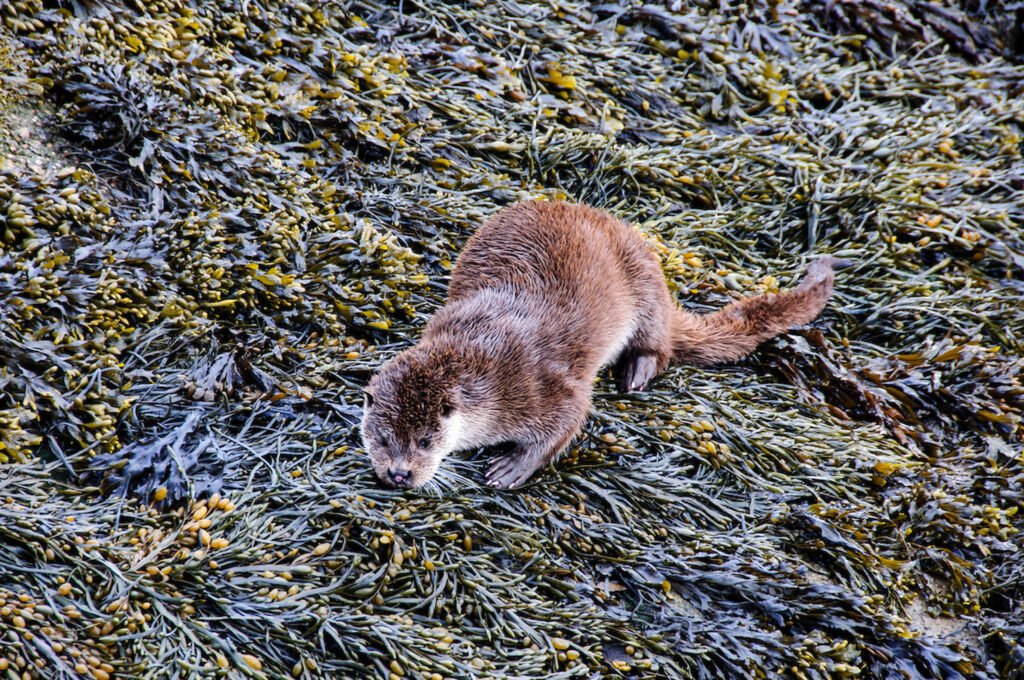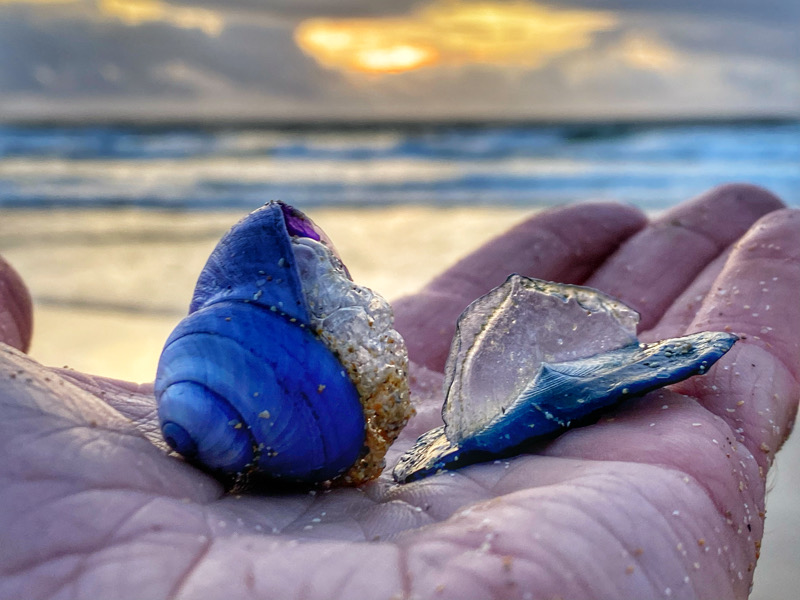
Wildlife on the Isle of Coll
Dec 20 2023
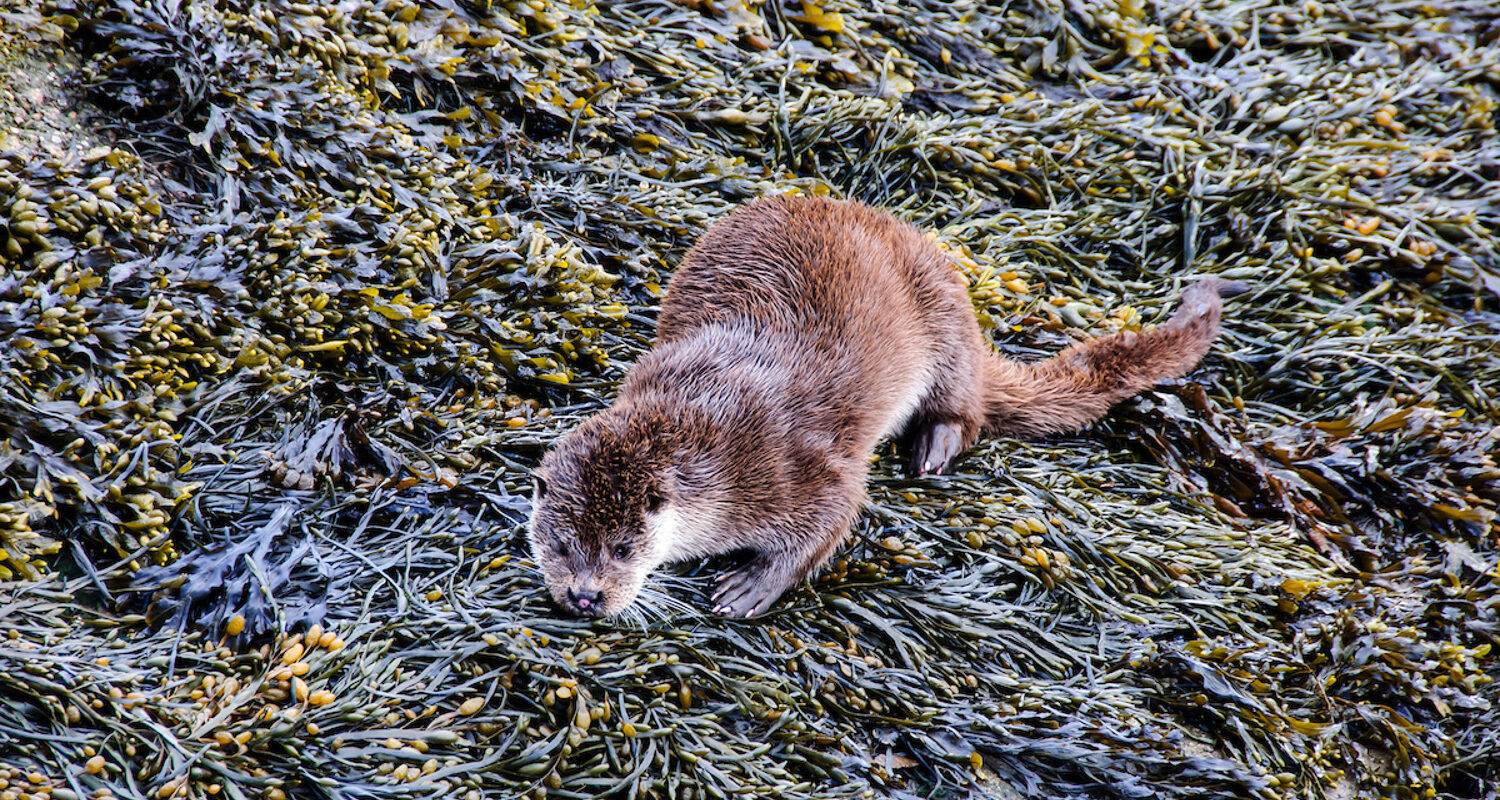
WILDLIFE: WHAT CAN I SEE ON COLL DURING MY STAY?
Nestled in the Inner Hebrides is the Isle of Coll; a wee hidden gem out in the Atlantic and where you will be staying if you are booked on one of our multi day trips during the summer.
Although you will spend a vast amount of time out at sea discovering the marine life that is just waiting to be found, you will have free time in the evenings and early mornings (if you’re an early riser!) Coll is a wildlife haven, with so much open and untouched wilderness, you are sure to spot some fantastic wildlife. Here are just a few things you may spot when you are here. Of course our marine biologist guides can give you some top tips so make sure to ask them for best advice.
Corncrake (Crex crex)
Appearance: The Corncrake is a member of the rail family so they are closely related to water rail, moorhens and coots. They are light brown in colour with darker brown wings and a light pink coloured bill. They are around 25-30cm in size and have rounded wings.
Behaviour: They are very secretive birds and are usually hidden in tall vegetation but you can quite often hear their rattly calls, especially during the night times. Corncrakes are migratory and spend winters in Africa.
When to see: April-September.
Fun fact: Did you know that Corncrakes cannot fly until they are 35 days old? The mother will often abandon the nest after 12 days and leave the chicks to fend for themselves so she can start another nest.
Hedgehog (Erinaceus europaeus)
Appearance: A very well recognised creature, Hedgehogs are small, brown and covered in prickly spines. They can have up to 7000 spines on them which are controlled by muscles so they can stick them up when rolled into a ball as a defence.
Behaviour: Hedgehogs are nocturnal creatures and hide away during the day in thick vegetation and hedges. They feed on many different things including amphibians, insects, bird eggs, worms and slugs – anything they can find really! They are thought to be non native to the islands and their large numbers (and no predators) have caused trouble on the Outer Hebrides where they have been impacted certain ground nesting birds. There hasn’t been any indication of that on Coll as yet.
When to see: April-October
Fun fact: Did you know that Hedgehogs can cover as much as 2 miles in distance during the night?
Brown Hare (Lepus europaeus)
Appearance: Brown hares are a light brown colour with a paler underside and tail. They have long ears which have black tips and although they are similar to rabbits, they much taller in size.
Behaviour: Unlike rabbits, hares do not live in burrows. They are found in ‘forms’ which is a shallow depression in long grass and they are very well camouflaged. Quite often you will see a Hare bolt across when their ‘form’ is disturbed. The easiest time to see a hare is during the spring when they are known for their boxing behaviour that is a response to their breeding season.
When to see: January-December
Fun fact: Did you know that hares can reach speeds of up to 45mph? We even have a rather tame one near BSS HQ that we see every morning.
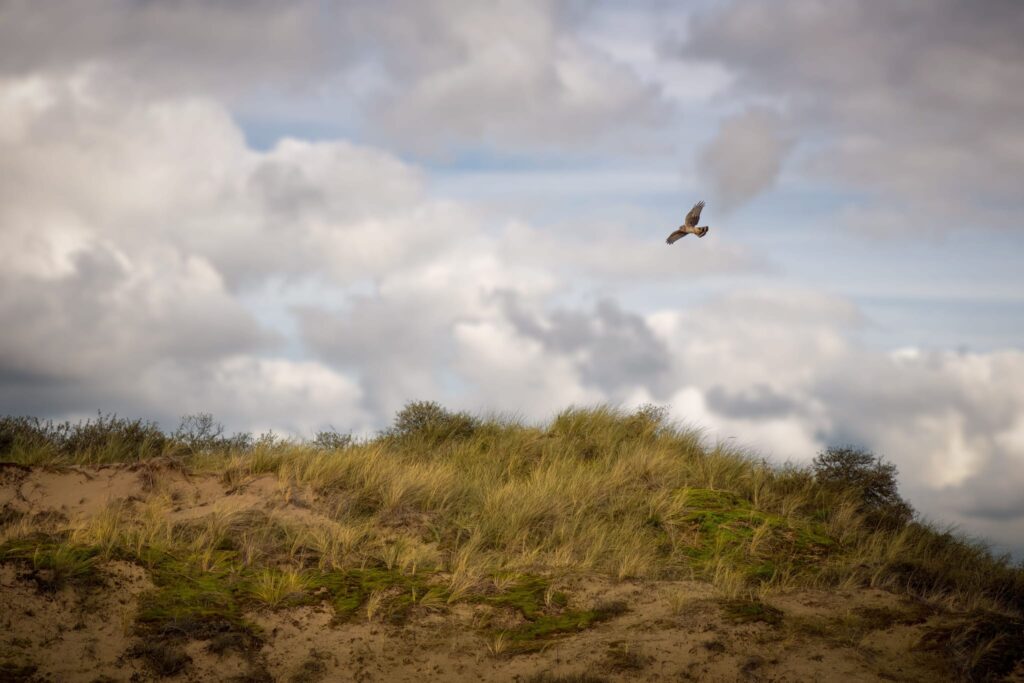
Appearance: Despite being one of the UK’s most endangered raptors, there are quite a few here on the Isle of Coll. Male Hen harriers are pale grey in colour with black tipped wing feathers. The females are brown in colour with a striped pattern in black and white on the wings, tail and body. They both have a white patch on their lower back and their wings have 5 very distinctive ‘finger’ like tips at the end.
Behaviour: Hen harriers feed on vertebrates and are often seen swooping low over long grass and vegetation. Their diet mainly consists of small birds and mammals but they will adapt to smaller prey such as amphibians or insects if their usual diet is sparse.
When to see: January-December.
Fun fact: Did you know that hen harriers are not monogamous? The male often mates with several females during the breeding season and will take prey to all of the nests.
Otter (Lutra lutra)
Appearance: Otters have long slender bodies covered in brown fur with small ears, short legs and a very long tail. They are our biggest mustelid species growing up to a size of 1.5 metres and are very strong swimmers with their muscular tail and webbed feet. They have sharp claws and long whiskers that are very sensitive aiding them with catching prey.
Behavior: They are mostly solitary animals, only being seen together during breeding times. They give birth to around 2-3 cubs that are born weighing around 100g. They are carnivorous animals that will feed mostly on fish but they do take advantage of amphibians or bird eggs if they are around. You may see Otters running around the harbour or along the burns leading down to the beautiful beaches on Coll.
When to see: All year round.
Fun fact: Did you know that Otter poo has a similar smell to that of Jasmine tea? If you don’t believe us, have a whiff!
Sand Lizard (Lacerta agilis)
Appearance: Our rarest reptile here in the UK, these lizards are a real special find on Coll. Male and females are different in appearance with the females being a pale sandy brown colour with dark patches along their backs. The males are brown with bright green sides and this is at its brightest during breeding season. They grow to around 20cm in length.
Behaviour: They are found in sand dunes and sandy heathland areas usually basking in the sun. They come out of hibernation during the spring time and the males get progressively brighter green in preparation for mating. The females will lay their eggs around June and July time with these hatching 1-2 months later on.
We haven’t added a picture as we have never seen one! To be honest your chances aren’t that high – but also remember due to their rarity they are also highly protected. Make sure you know
When to see: April-October.
Fun fact: Did you know that the Sand lizards on Coll were a part of an experiment in the 1970’s? Scientists released a population of 39 to see whether they would be able to survive so far north.
Round leaved Sundew (Drosera rotundifolia)
Appearance: Yes – you might not realise- but this is our native venus fly trap type of plant. They are in the same family, so reasonably closely related. The red coloured leaves are covered in hairs with droplets of sticky dew which attracts and traps insects. Although the image is an extreme close up they are relatively small being a few centimetres across. However their flower stalks can be up to 15cm.
Behaviour: They might not be the most dynamic of species and you might have a long wait to see some movement! However they will eventually close up after trapping an insect in their sticky dew. The live in wet boggy areas where the soil is poor in nutrients, so they evolved to predate insects to supplement their ‘diet’.
When to see: June to August
Fun fact: The dew on the plant was thought to have magical properties including anti-ageing and virility. We can’t comment on either and wouldn’t recommend to try it at home.
Marine Wildlife
Appearance: We run boat based wildlife tours for good reason, it’s by far the best method to observe and see all the amazing marine life in the waters around the Isle. It’s a dynamic environment and feeding activity can be far offshore and move quickly. However with time, persistence and knowing where to look then we have seen lots of different wildlife from shore. Orca, fin, humpback & minke whale, seals, seabirds basking sharks of course – it sounds a lot but we are wildlife guides as the day job!
Behaviour: Basking sharks are very tricky to spot from shore unless you are lucky, they are close to coast and you have a good vantage point. Cetaceans are a little easier as you can see them surfacing, jumping, blowing or fluking. Top tip, bird activity is a great indicator of some action happening. If you see lots of birds flying round and diving in. Then keep your eyes peeled on that area and you should have a good chance to see something bigger.
When to see: Year round (peak season Jul-Sept)
Fun fact: The Scots gaelic for whale is Muc-mhara, there is a small island near the coast of Coll which is Eilean na Muc. One of the translations is island of whales (or porpoises) and it does indeed sit next to an area of deep water where there we do see a lot of porpoises & whales!
Beachcoming / Strandline
Appearance:Coll’s west coast faces the open Atlantic meaning for marine geeks there can be lots of interesting finds in the strand line, especially after windy weather. Some of our favorite finds include violet sea snails, flapper skate mermaids purse, sea beans and goose barnacles. Have a read about sea snails here.
Behaviour: Ok – washing up om the beach isn’t so interesting behavoir but it’s all about the thrill of the hunt!
When to see: Year round
Fun fact: Violet sea snails (pictured above) float along the surface of the water having made a bubble raft and predate the also bizarre looking by-the-wind sailors.
Highland Coo
Appearance: Usually brown (strawberry blonde!?) or black. Shaggy/fluffy/floppy hair with big pointy bits. Coll’s mascot Twisty has the famous twisted horns.
Behaviour: Usually fairly benign but it’s still a very large animal with big pointy horns. Don’t be that person that gets in a field beside them! You’ll get plenty of pics from behind the fence!
When to see: Year round
Fun fact: Twisty is the inspiration for the Isle of Coll gin design.
